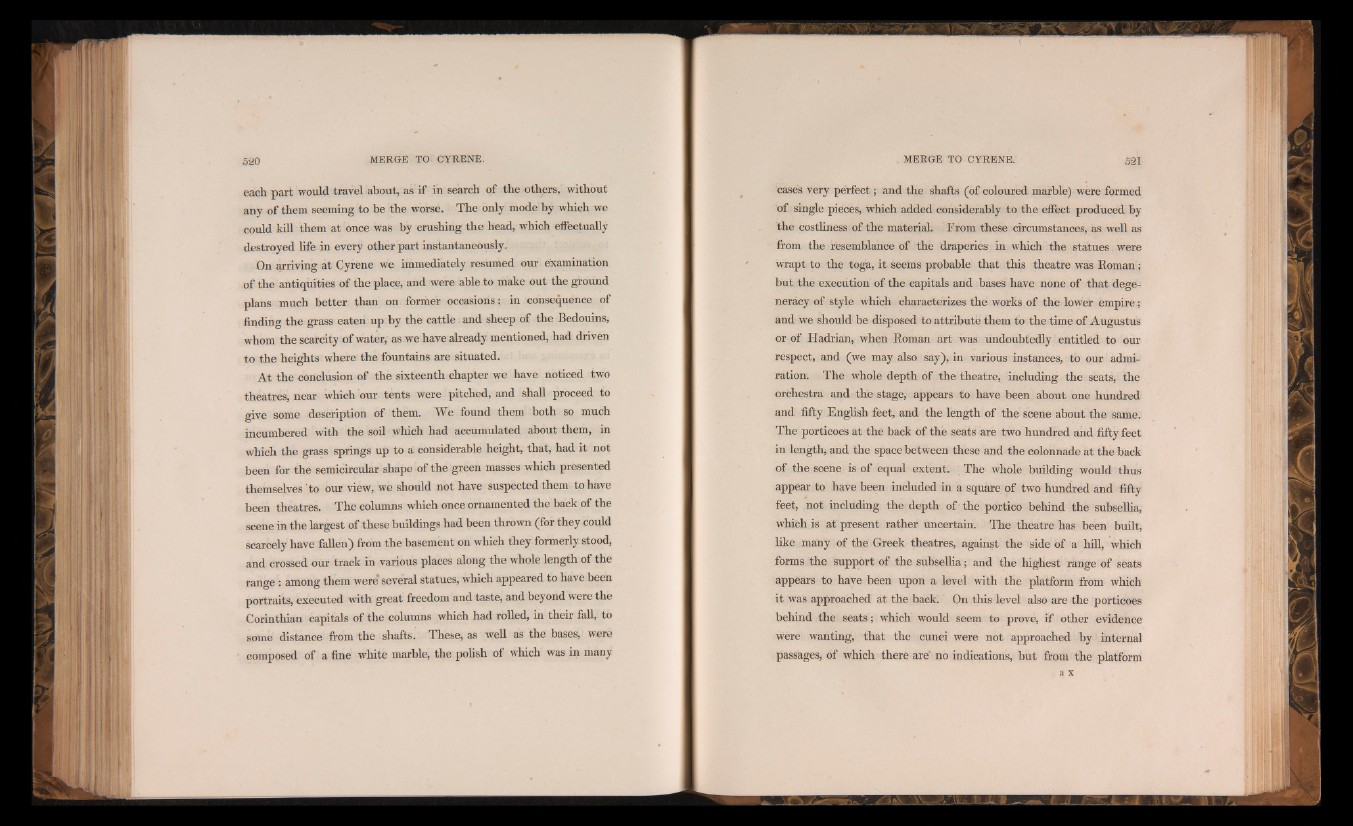
each part would travel about, as if in search of the others, without
any of them seeming to be the worse. The only mode by which we
could kill them at once was by crushing the head, which effectually
destroyed life in every other part instantaneously.
On arriving at Cyrene we immediately resumed our examination
of the antiquities of the place, and were able to make out the ground
plans much better than on former occasions; in consequence of
f i n d i n g the grass eaten up by the cattle and sheep of the Bedouins,
whom the scarcity of water, as we have already mentioned, had driven
to the heights where the fountains are situated.
At the conclusion of the sixteenth chapter we have noticed two
theatres, near which our tents were pitched, and shall proceed to
give some description of them. We found them both so much
incumbered with the soil which had accumulated about them, in
which the grass springs up to a considerable height, that, had it not
been for the semicircular shape of the green masses which presented
themselves to our view, we should not have suspected them to have
been theatres. The columns which once ornamented the back of the
scene in the largest of these buildings had been thrown (for they could
scarcely have fallen) from the basement on which they formerly stood,
and crossed our track in various places along the whole length of the
range : among them were* several statues, which appeared to have been
portraits, executed with great freedom and taste, and beyond were the
Corinthian capitals of the columns which had rolled, in their fall, to
some distance from the shafts. These, as well as the bases, were
composed of a fine white marble, the polish of which was in many
cases very perfect ; and the shafts (of coloured marble) were formed
of single pieces, which added considerably to the effect produced by
the costliness of the material. From these circumstances, as well as
from the resemblance of the draperies in which the statues were
wrapt to the toga, it seems probable that this theatre was Roman ;
but the execution of the capitals and bases have none of that degeneracy
of style which characterizes the works of the lower empire ;
and we should be disposed to attribute them to the time of Augustus
or of Hadrian, when Roman art was undoubtedly entitled to our
respect, and (we may also say), in various instances, to our admiration.
The whole depth of the theatre, including the seats, the
orchestra, and the stage, appears to have been about one hundred
and fifty English feet, and the length of the scene about the same.
The porticoes at the back of the seats are two hundred and fifty feet
in length, and the space between these and the colonnade at the back
of the scene is of equal extent. The whole building would thus
appear to have been included in a square of two hundred and fifty
feet, not including the depth of the portico behind the subsellia,
which is at present rather uncertain. The theatre has been built,
like many of the Greek theatres, against the side of a hill, which
forms the support of the subsellia ; and the highest range of seats
appears to have been upon a level with the platform from which
it was approached at the back. On this level also are the porticoes
behind the seats ; which would seem to prove, if other evidence
were wanting, that the cunei were not approached by internal
passages, of which there are' no indications, but from the platform